Can you imagine building an app with no code? Is it possible? Yes, it is. You can create a website application with zero lines of code. Let’s talk about it.
77% of companies worldwide use low-code apps, while 75% of IT leaders said it’s an advantage. Between 2018 and 2023, the number of low-code apps in use grew to 500 million.
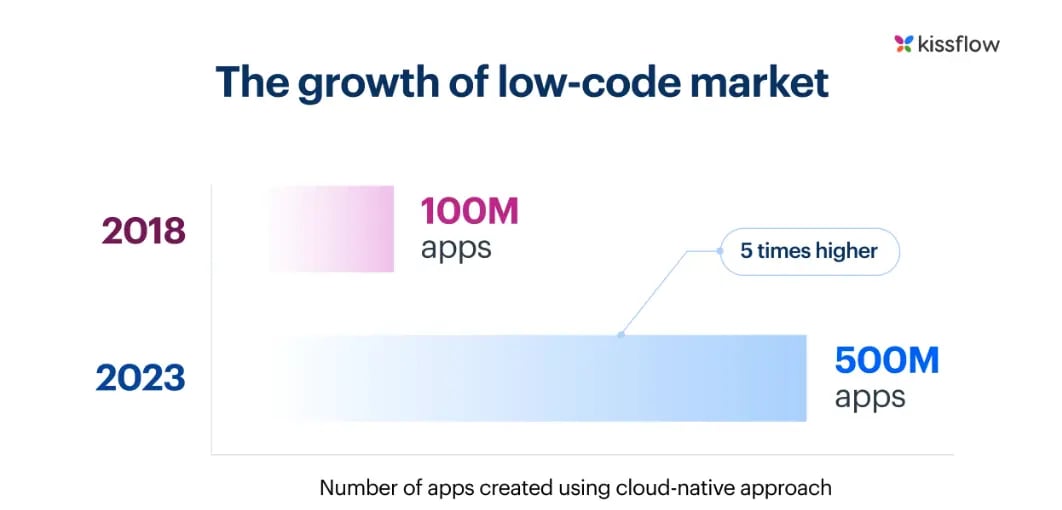
Gartner predicts that by 2025, 70% of new apps will be low-code/no-code technology, compared to less than 25% in 2020.
What is so special about this trend causing business leaders to jump on board? We’re about to find out.
What is a Low-Code/No-Code Platform?
As a concept, low-code/no-code, aka LC/NC, has seen a significant surge in popularity in the past few years since the COVID-19 lockdown and the rise in reliance on digital technology.
Forrester mentioned the term “low code” for the first time in this 2014 article.
A low-code/no-code development platform is a tool for creating apps that eliminates the need for textual coding and offers a visual drag-and-drop interface instead.
It’s a development environment that implies using minimal or no code.
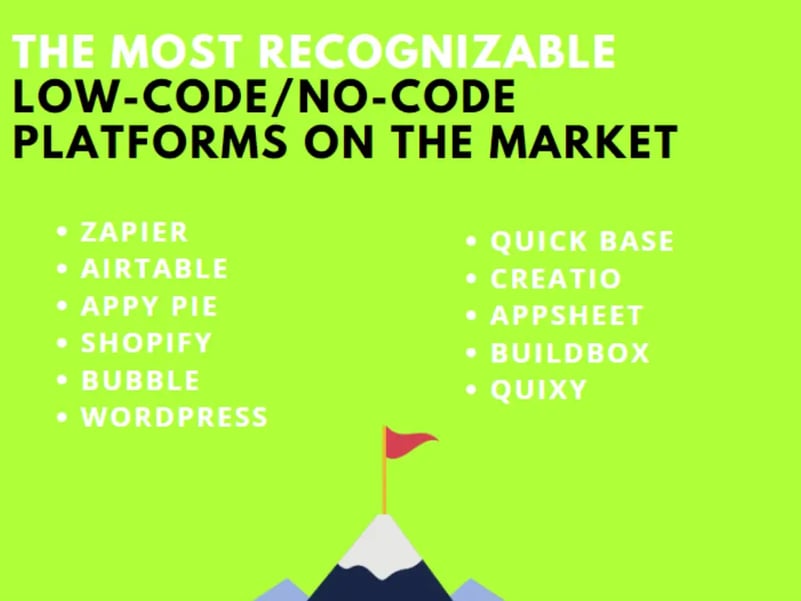
Companies have been actively adopting new business strategies for digital transformation and shifting towards low-code or zero-code ecosystems.
What 7 CEOs Said About Low-Code/No-Code Platforms
LC/NC platforms and tools have certain advantages in store for businesses. We’ve collected insights from seven CEOs who have already seen their full power in effect.
1. Bridges gap between IT and business + enhanced collaboration
Over 84% of enterprise companies have leveraged low code to reduce the gap between their IT and business-oriented departments and get everyone involved in digital product development.
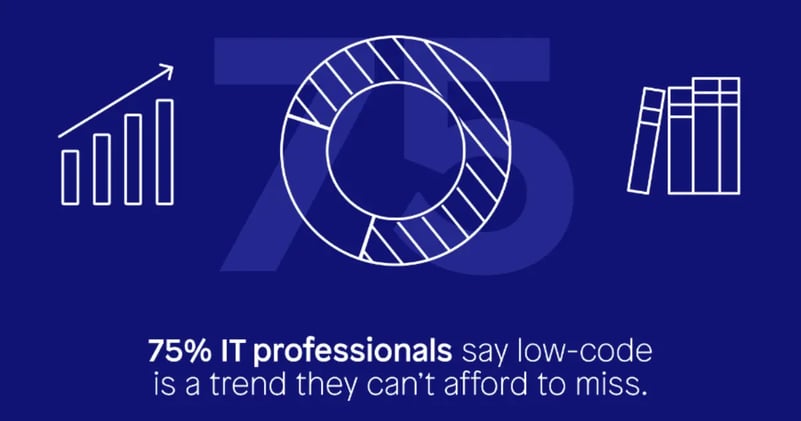
Source: Mendix Report
The Mendix report above shows 59% of low-code projects were business and IT collaborations. That’s when workplace team collaboration becomes the key. Here's how Logan Mallory, VP of Motivosity, comments on it:
“Low code supercharges cross-departmental collaboration in particular. Because of a simple and unambiguous visual interface, it’s a universal language everyone understands clearly and distinctly."
He continues, "Low code also enables teams to stay connected in a remote world and collaborate better with colleagues on a company-wide level. At Motivosity, it helps all departments work on the application more productively, scale it up in real-time, and reach goals faster and more efficiently.”
2. Simplistic implementation
No-code is 4.8x times easier to implement than traditional programming. Anthony Martin, Founder, and CEO of Choice Mutual emphasizes,
“With low-code/no-code tools, even non-techies on your team can effortlessly break into the digital technology space of business without any programming and coding knowledge.”
“They don’t need any deep tech skills or any specific IT certifications/courses to try on the shoes of developers. Only short-time training may be required to get familiar with the platform. That’s all.
At Choice Mutual, we have opted for WordPress, a no-code website builder, and an easy-to-use content management platform. Its drag-and-drop features, templates, and libraries of widgets and elements simplify the process greatly for our employees,” Anthony adds.
An empowered employee who creates new or changes existing business websites or apps without involving an IT dept is called a citizen developer.
Today, anyone can quickly create an eCommerce website with WordPress due to its low-code/no-code functionality.
3. Cost efficiency
LC/NC allows businesses to reduce the cost of software creation because there’s no need to hire dedicated software developers in the first place.
Jake Hill, Founder of DebtHammer, operates with numbers highlighting this advantage:
“If you go with a low-code/no-code solution, you can create a website or software without a single app developer. The plans for no-code development tools typically start from $5 per user per month for small business needs.”
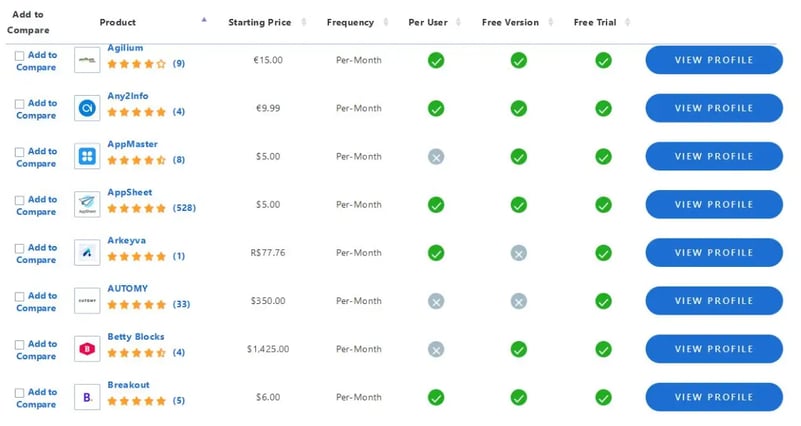
Jake continues:
“Depending on different factors (type of business and industry, the complexity of design, number of features, etc.), the average price for software or web application development in the US ranges between $50,000 and $400,000.
So, it’s easy to calculate that a low-code or zero-code app-building platform is one of the best cost optimization strategies for small businesses aiming to conquer the digital universe without breaking the bank or going broke.”
Research shows that you can reduce expenses on development by as much as 80%.
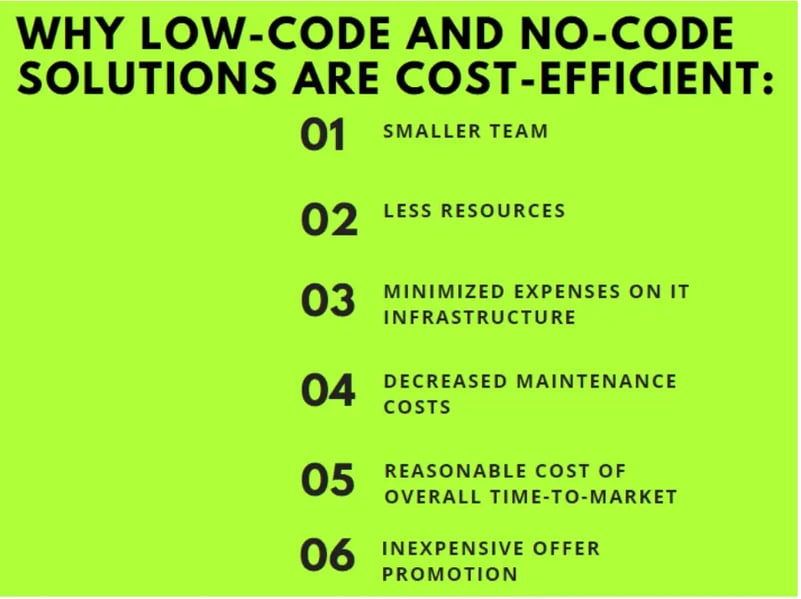
Website and app builders offer low-cost marketing options and a wide range of experiments with popups or online forms for lead generation.
4. Increased speed of workflow automation and product/service delivery
The number of executives who indicated that a low-code or no-code platform is their most vital automation investment has grown from 10% to 26% in one year! So says Mark Pierce, CEO of Cloud Peak Law Group:
“Low-code or zero-code workflow automation platforms like Zapier, Salesforce, Unito, or Workato, for instance, allow skipping hours of manual and error-prone tasks.”
“With a low-code framework in our tech stack, we have improved business processes, eliminated risks of service interruptions, and minimized downtimes. We have unified communication between attorneys and consultants with an in-app messenger. Easily scheduled and automated workflows resulted in quicker delivery of LLC formation services to clients,” Mark shares.
Regarding app development, low code can speed it up by ten times. You can start selling your digital products faster, decreasing the time to market.
5. High customization opportunities
Tom Golubovich, Head of Marketing of Ninja Transfers, puts it like this:
“Customization of design is significant to meet specific needs of different customer segments. We decided to try Shopify and YotPo – partners in the no-code revolution to accelerate direct-to-consumer growth.
Shopify is a beneficial tool with various customization capabilities: theme, product page, discount offers, checkout, payment, and more. After A/B testing for color, we’re now on our way to customize Shopify’s dynamic checkout button and other call-to-action buttons, too,” Tom notes.

Optimizing online forms and customizing them to the needs of your audience and your business’s needs will increase conversion rates and boost sales.
For example, you can use a customizable Stripe button as a simple and seamless method for customers to pay you on your website.
6. Boosted productivity and agility
90% of no-code users think their companies have been able to grow faster due to flexible and agile no-code. 80% of them revealed it helped them work more productively.
According to Jarret Austin, Owner of Bankruptcy Canada:
“Business agility in the digital era is particularly critical for such ever-evolving industries as finance, investment, or banking.
Citizen developers of low-code/no-code can enact changes on the go increasing the financial service agility and improving the ability to respond to the ever-changing financial needs of digital consumers.
For example, one of the African wealth management companies leveraged Vuram, a low-code platform, which doubled their transactions and reduced mistakes by 70%. The company also experienced zero loss of cases when migrating from their legacy system."
Read more about the case in Vuram’s whitepaper on the low-code potential for flexibility and growth in the banking and financial sectors.
7. Greater customer experiences
If you want to improve customer experience and amplify it with more personalized and impactful features, LC/NC is the way to go.
Greg Heilers, Co-founder of Jolly SEO, explains how his company takes advantage of a no-code solution on the website to provide a better user experience:
“We’ve been using HubSpot’s live chat builder with no coding skills required. HubBot offers smooth self-service and directs you to the information you search for.
When customizing it, we added a self-guided Q&A format and provided the choice of services (Premium HARO Linkbuilding Service, Gold Tier HARO Linkbuilding Service, and Whitehat Linkbuilding Service), among other things.”
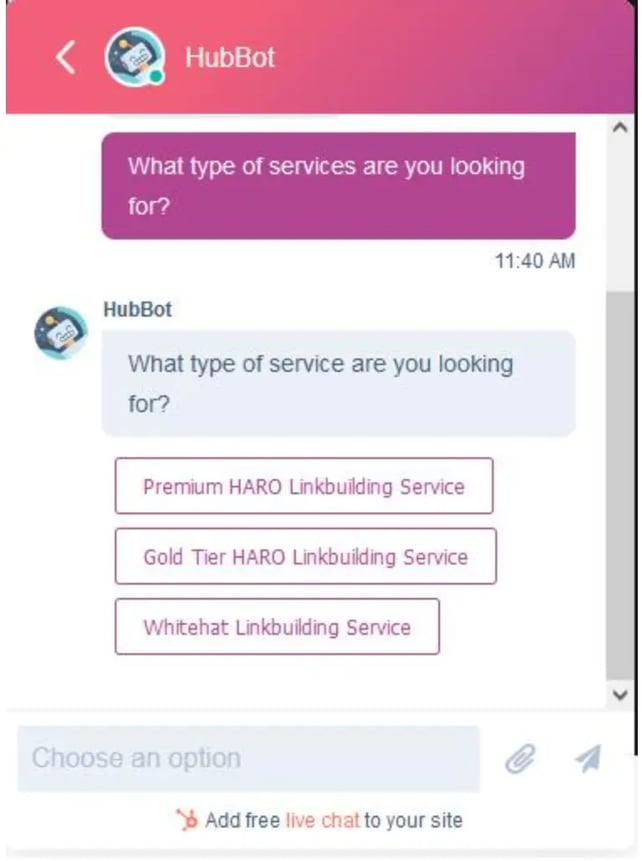
A no-code chatbot builder can bring your customer engagement strategy to the next level.
Unlock the Low-Code/No-Code Potential
In this article, seven CEOs and founders have shared their thoughts and experiences of using low-code and no-code platforms.
Armed with such technologies, you may advance your operations digitally and stand out from the competition. Consider some other tools to give your business a boost.
Grow your company online with POWR – an all-in-one suite of customizable and user-friendly plugins to enhance your website or application. No code is required!

